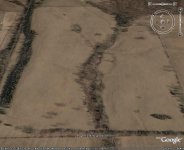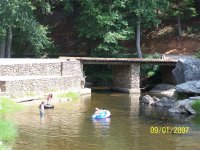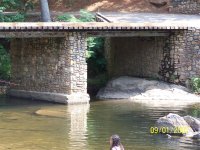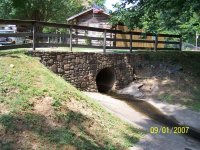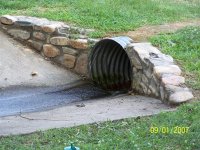HA! Well....... kind of, but not as bad as you'd think. I'm pretty strict on her, but she likes to play me too.
Eddie, thanks for the tips... yikes!

I have a question about that $$$/acre under water. If you have a long valley Vs. a short valley that you plan to flood, but the height of the water at the dam is the same, can the dam be the same size? In reading this thread I recall somewhere in the middle a discussion about that and the force being applied to the dam being a result of the depth of water, not the width of the channel. My thoughts there are that the major expense will be making the dam, but depending on where in the valley I put it, I could really varry the size of the lake but keep the dam relatively similar in size. I realize there's prep work to the bottom of the lake to make sure it holds water, but I'm not planning to "dig" the lake out, meaning I am hoping not to have to dig down 15 feet to get a 15 foot deep section. I want to flood the valley and bring the water level up the sides of the existing terrain. That's part of the reason to put it there. I have horrible soil for everything except holding water. I don't think it will take a ton of work to get the bottom rolled in. That other pond (it was there when I bought the place, not my choice of spots) is on the crest of a hill, NO run off to speak of at all, and it's almost completely full in the midst of one of the worst droughts we've had in decades. Maybe I'm naive, I like to think of it as optimistic, but I'm hoping it will be less work than you are describing. However, that's why I'm here, to figure out what is really going to happen when I start that sucker. If we're talking $60K or more to build that sucker it's going to be a loooooong while before I can pull that off.


